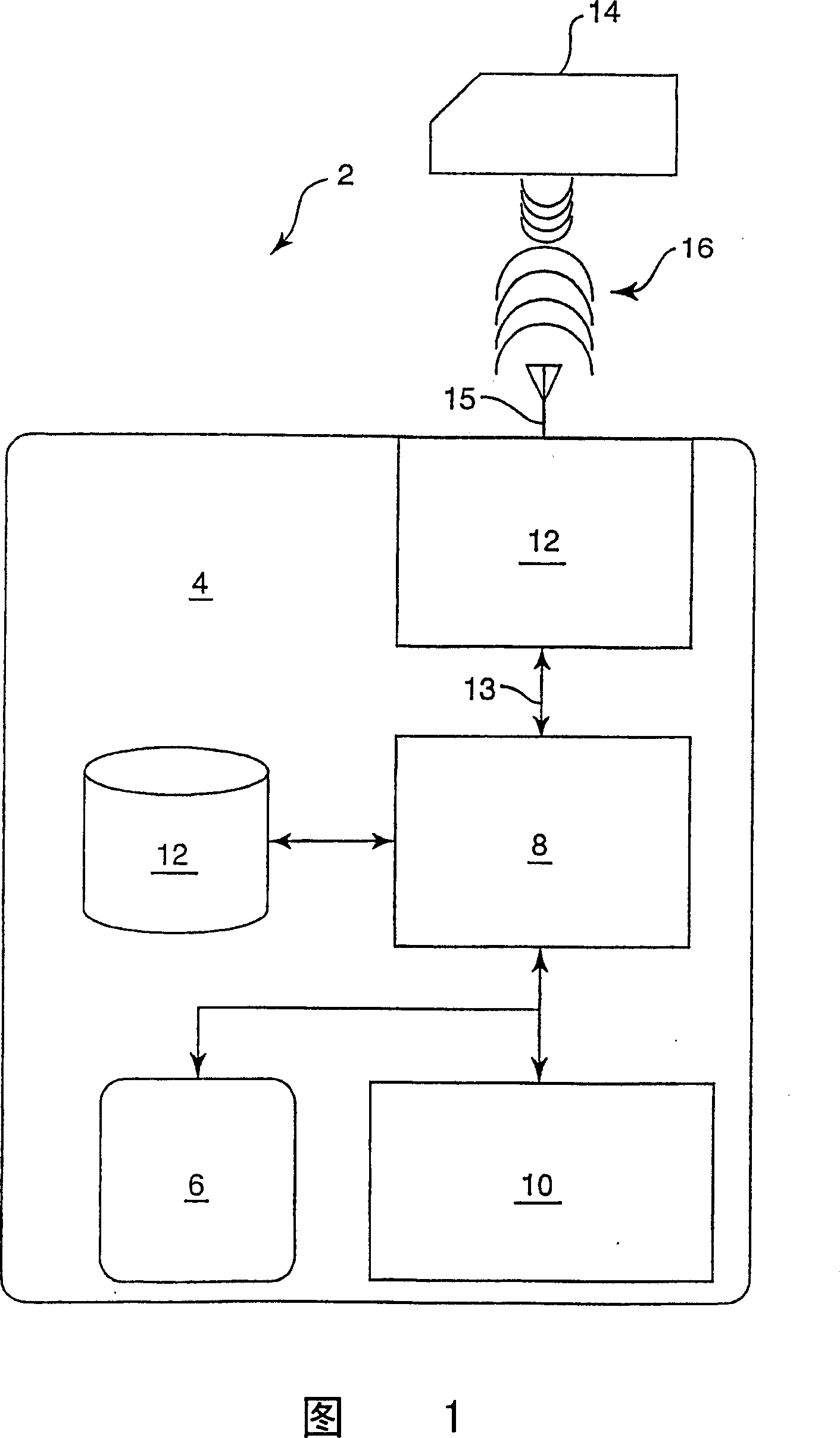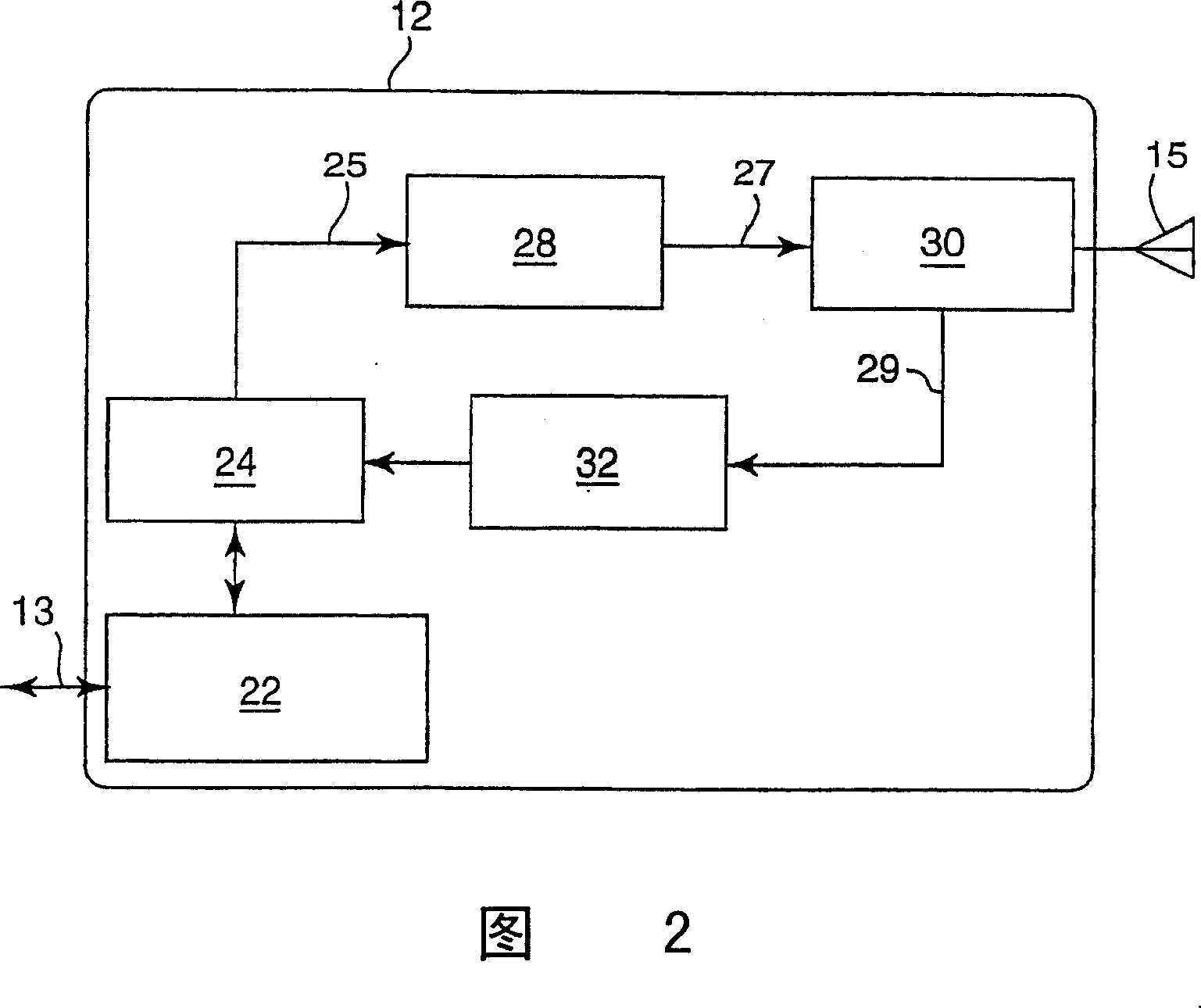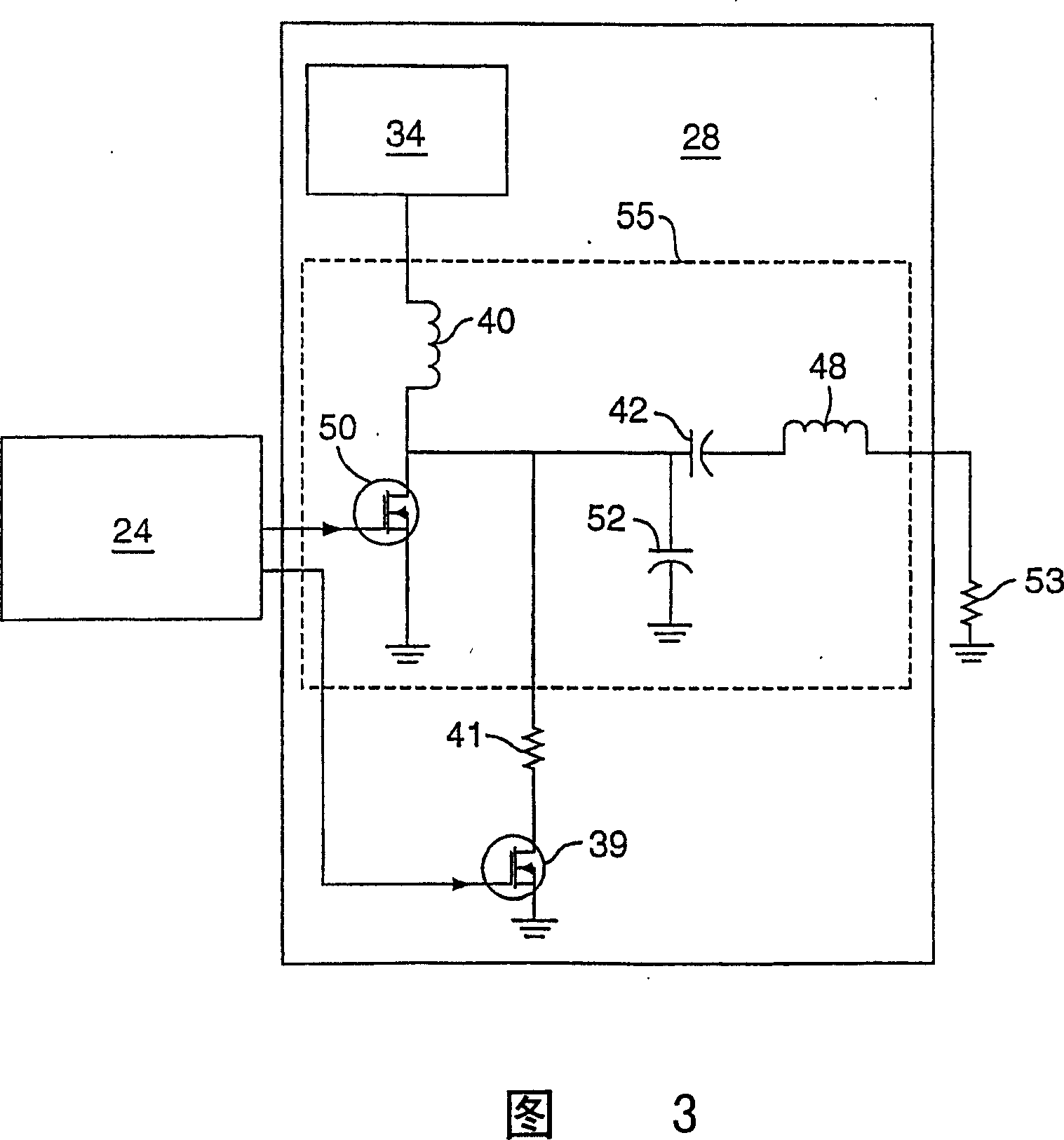Amplifier modulation
An amplifier and resistor technology, applied in the field of amplifier modulation, can solve the problems of limited communication range, amplifier heat dissipation requirements and unsuitable power consumption, etc., to achieve the effect of reducing heat dissipation requirements, increasing data transfer rate, and stable current level
- Summary
- Abstract
- Description
- Claims
- Application Information
AI Technical Summary
Problems solved by technology
Method used
Image
Examples
Embodiment Construction
[0024] FIG. 1 is a block diagram illustrating an example radio frequency identification (RFID) system 2 . RFID system 2 includes an RFID station (“station”) 4 that interacts with tags 14 via radio frequency signals 16 . Specifically, station 4 includes an RFID reader ("reader") 12 that generates and receives RF communications 16 via antenna 15 to power and receive information from tags 14 . The reader 12 and tag 14 communicate using amplitude modulated RF communication 16 according to defined protocols such as ISO / IEC 14443 and ISO / IEC 15693 standards.
[0025] Station 4 provides a workstation or other computing environment to process information received from tags 14 and provide tag programming information to readers 12 . Station 4 includes, for example, processor 8 in communication with reader 12 via communication link 13 . As shown, the reader 12 can be built-in, external to the station 4, or even be a hand-held portable reader. Thus, link 13 may be an RS-232 serial comm...
PUM
 Login to View More
Login to View More Abstract
Description
Claims
Application Information
 Login to View More
Login to View More - R&D
- Intellectual Property
- Life Sciences
- Materials
- Tech Scout
- Unparalleled Data Quality
- Higher Quality Content
- 60% Fewer Hallucinations
Browse by: Latest US Patents, China's latest patents, Technical Efficacy Thesaurus, Application Domain, Technology Topic, Popular Technical Reports.
© 2025 PatSnap. All rights reserved.Legal|Privacy policy|Modern Slavery Act Transparency Statement|Sitemap|About US| Contact US: help@patsnap.com



